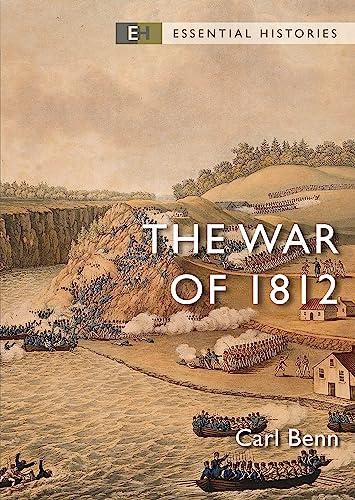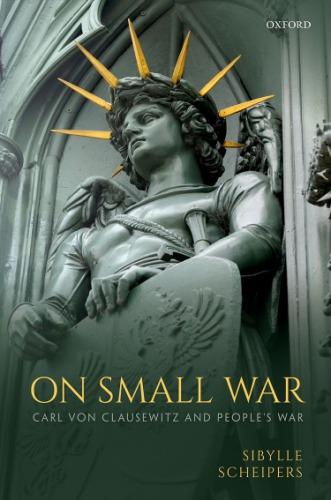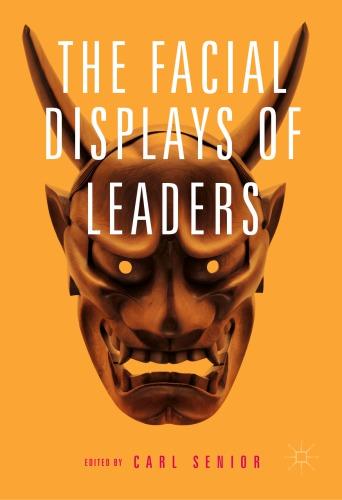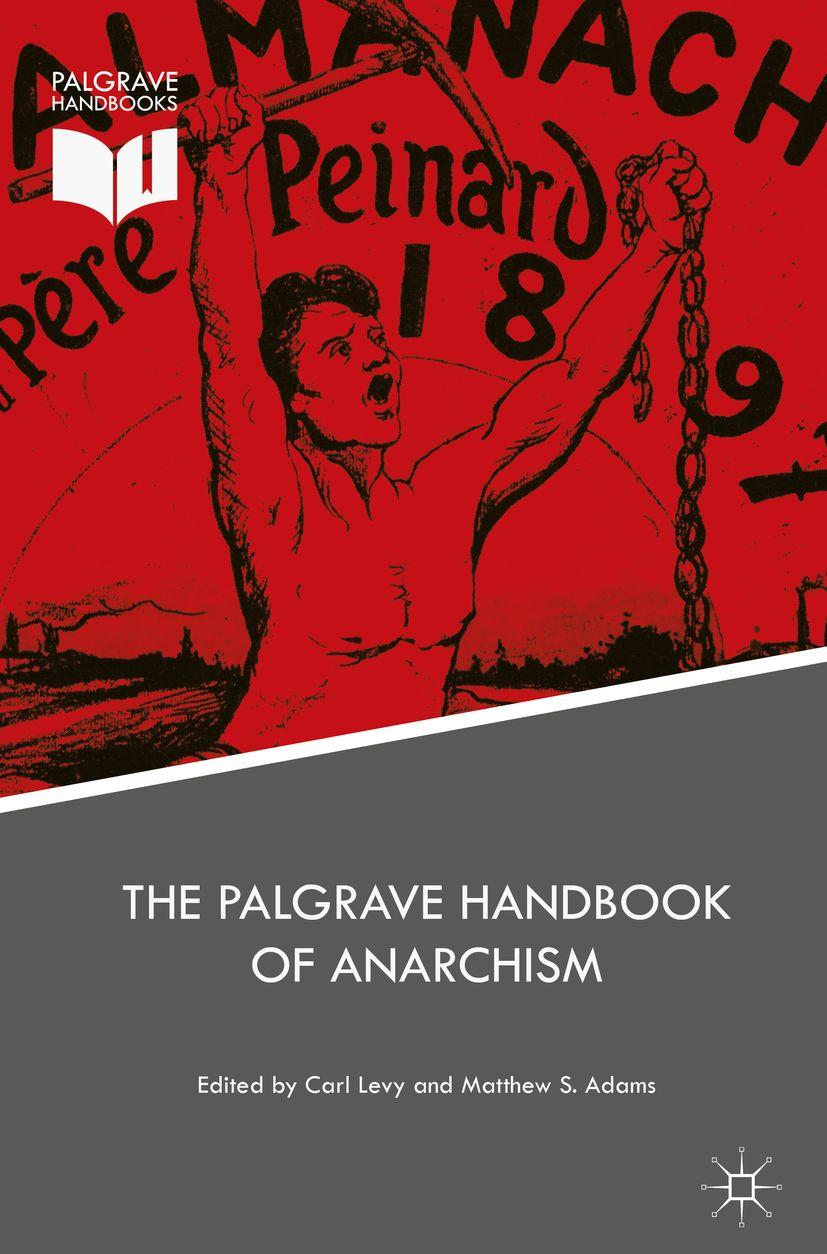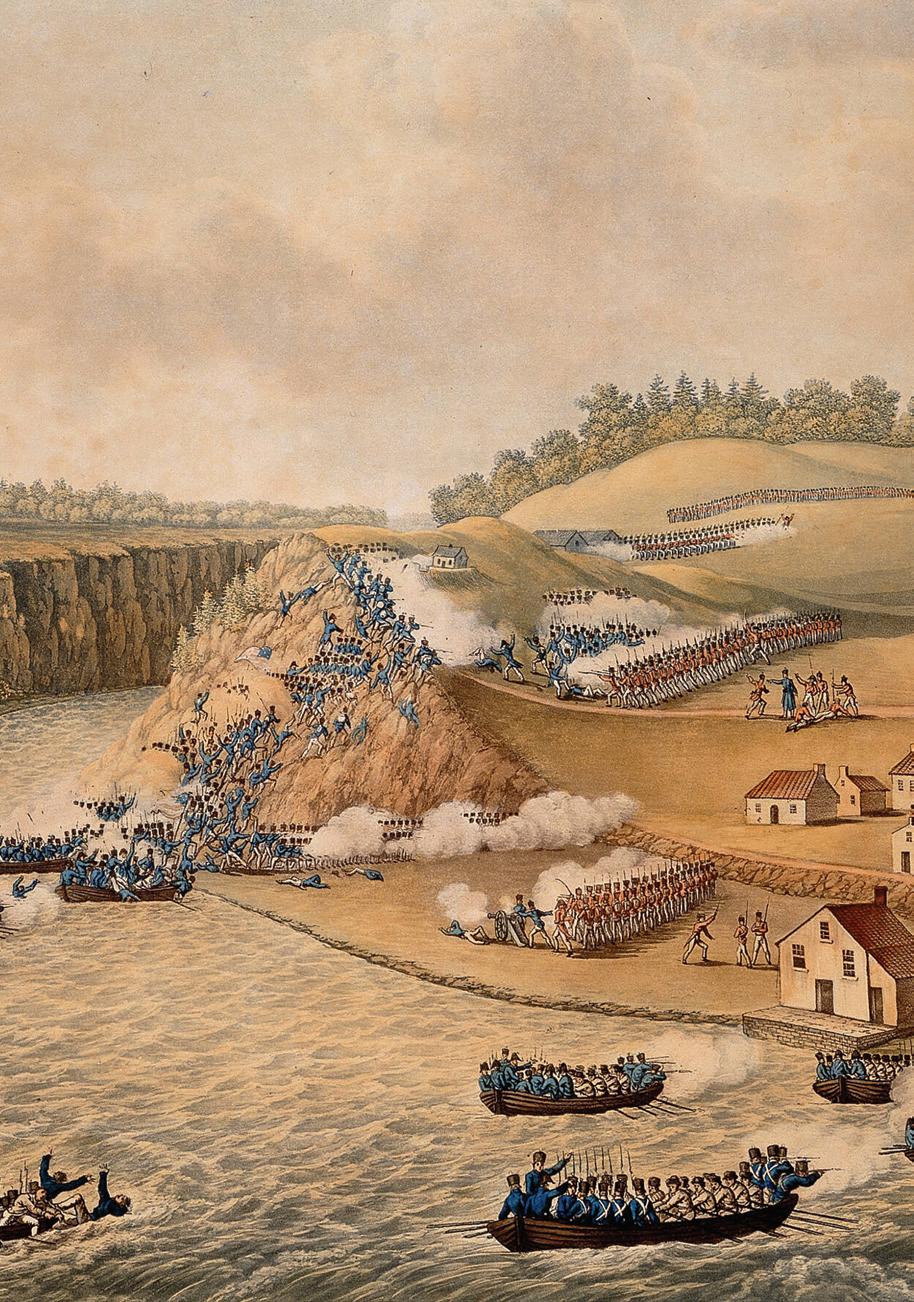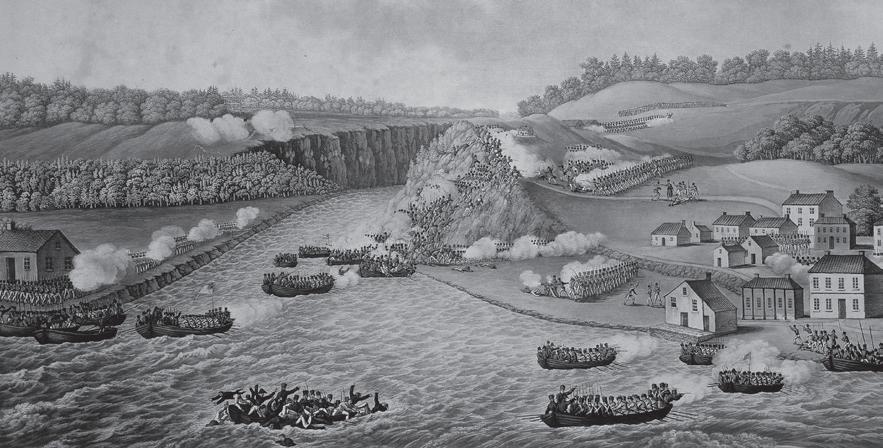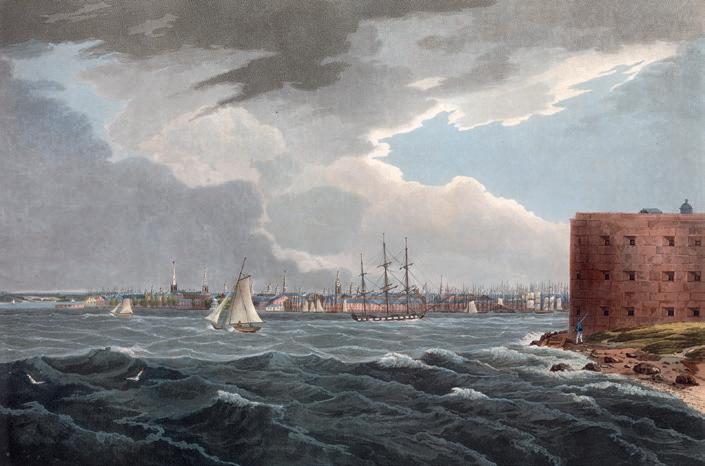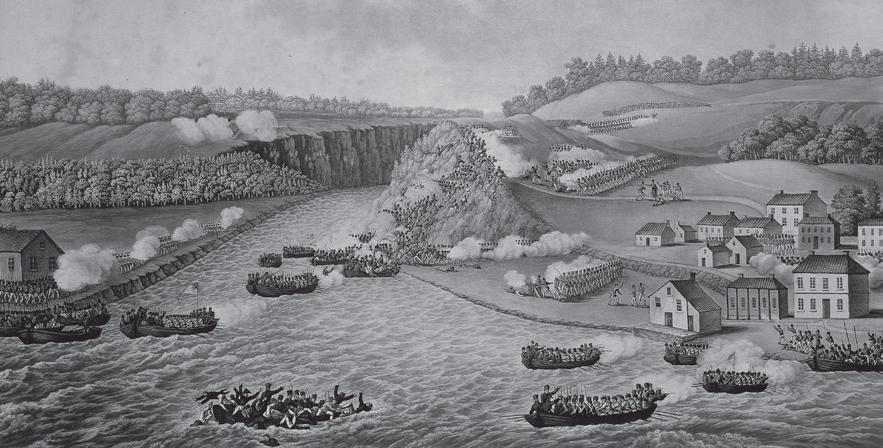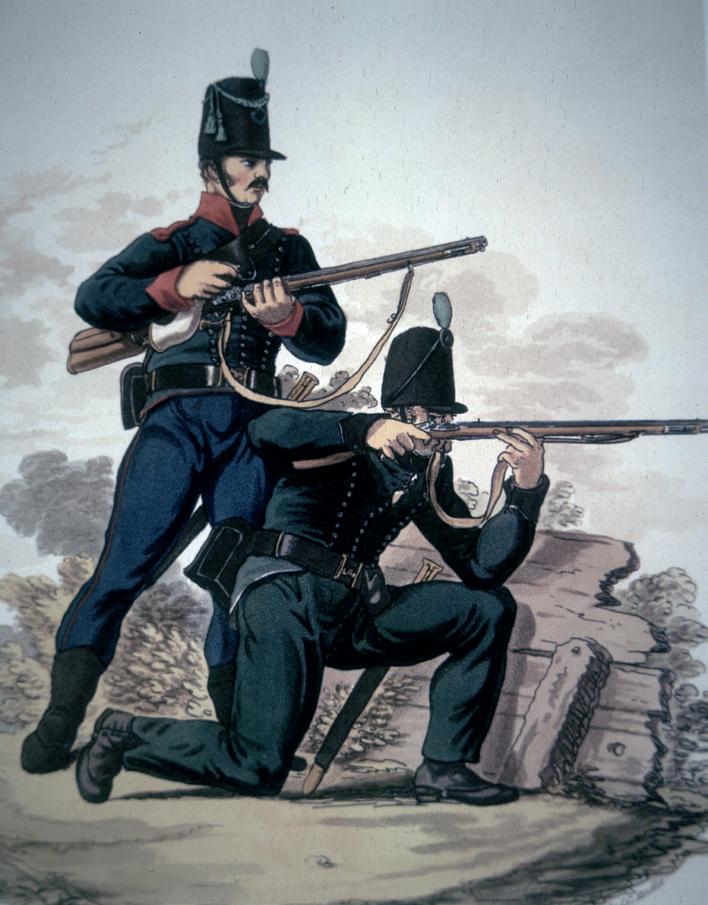I n T r O du CTIO n
In the western parts of the lower Great Lakes and the upper Mississippi River in 1805, two Shawnee men, Tecumseh and Tenskwatawa, spoke words of enraged bitterness and religious revitalization to encourage the First Nations to form a defensive alliance. Their communities had lived through decades of profound dislocation, especially since the birth of the United States of America in 1776, as its citizens seemed to hold their rights in contempt when they conflicted with those of land-hungry settlers. Peaceful attempts to protect Indigenous interests had failed, and many people now thought they might have to fight in order to secure a future for their children.
Off the coast of Virginia two years later, during Great Britain’s long war with France and its allies, the captain of HMS Leopard ordered the United States frigate Chesapeake to stop so he could search it for deserters from the Royal Navy. The Americans refused. The British fired a broadside, killing or wounding 21 men. After replying with a single shot to assert the dignity of the flag, the Chesapeake surrendered, whereupon a boarding party seized four deserters from the US vessel –one Briton and three Americans. This attack on a neutral warship outraged Americans, insulted their sovereignty, and served as a blunt symbol of the gravity of a wider crisis unfolding between the two countries over free trade and sailors’ rights.
As relations between Great Britain and the United States degenerated towards war, many Americans wanted to seize the British provinces on their northern border. They hoped to retaliate for Britain’s behaviour on the world’s oceans, realize their dreams for America’s destiny, and, for some, to profit personally. Others, such as James Madison, who became president in 1809, believed that conquest was desirable partly because these colonies were emerging as significant competitors in the export
OPPOSIT e
The war’s most famous general was Andrew Jackson. He later became US president, as did other veterans Willam Henry Harrison, John Tyler, Zachary Taylor, and James Buchanan. (Oil, c .1819, Metropolitan Museum of Art)
ATLANTI C OCEA N
of North American products. Additionally, annexation would benefit US expansion elsewhere: in the west against Indigenous tribes by depriving them of help from British officials and Canadian fur traders; and in the south, where expansionists hoped that the subjugation of Canada would increase support for their goal of taking East and West Florida from Spain, then a British ally.
All these issues, along with a political crisis that threatened Madison’s hold on power, led the United States to choose war over diplomacy in June 1812. A month later, American soldiers invaded Canada, heralding the beginning of three years of fighting that would plague the United States, Great Britain, its colonies, and many of the First Nations of eastern North America. In the following pages we will explore the story of the war on land and sea, study its causes and outcomes, and examine some of the conflict’s important secondary themes.
This book is a thoroughly revised and enlarged version of one that Osprey published in 2002. As the author of the original, I am pleased to share this edition with readers, especially because it provides a late-career opportunity to summarize my thoughts on the war for general audiences. Aside from correcting a small number of errors, it benefits from the impressive advances in scholarship that have occurred over the last two decades. Beyond wide-ranging analytical reinterpretations, expanded archival research since 2002 has changed even basic assumptions, such as the dates when some battles occurred and the size of the opposing forces (although other details remain unclear or subject to debate). In addition, historians have examined subjects that had not received much attention before, or have re-evaluated long-standing themes of importance. Established authors, including the Canadian Donald Graves and the American Donald Hickey, have continued to add to our understanding, while new scholars, such as Americans Nicole Eustace and Adam Jortner, have emerged to make their contributions to the war’s historiography. Across the Atlantic, British

The historic port of Quebec and capital of British North America was the strongest military position in Upper and Lower Canada. (Print, 1813, Library of Congress)
historians have devoted more attention to the events of 1812–15 than was common in the past, as represented by the work of Andrew Lambert. (In my own case, I have written two additional books and several articles on the subject since 2002 to add to my earlier efforts.) This edition also presents more images than the earlier one did, and most are different from those that appeared in the original. It is, therefore, my hope that readers will find this concise overview of one of North America’s formative events to be both informative and enjoyable.
A small war with complex causes
Sailors’ rights
The Chesapeake affair symbolized how grave the issue of ‘impressment’ was between Great Britain and the United States. The number of seamen per ton of ship in the Royal Navy (RN) was worse than it was among other major maritime powers, and in its desperation to fill ships’ companies in the war with France, it impressed men. This was a rough form of conscription, regarded as little more than legalized kidnappings in port towns and from merchant vessels by its victims and their families. Naturally, many impressed men deserted, as did others who had volunteered for the navy but who subsequently regretted their decision. Large numbers of them fled to foreign ships for asylum and employment, including to those of the United States. At the same time, foreign seamen –including Americans – who found themselves unemployed in ports far from home, joined the Royal Navy. They also often deserted. Legally, all of these individuals were liable to being returned to the navy, while Britons who had emigrated to the United States had statutory obligations to serve if impressed. Consequently, the RN stopped merchant ships to remove eligible men, but some officers illegitimately took citizens from other countries, including Americans, who neither had served in the British navy nor had links to King George III’s dominions.
In 1811, the USS President engaged HMS Little Belt off Chesapeake Bay, inflicting heavy casualties on the smaller vessel. (Print, c .1811–12, photo by Print Collector/ Getty Images)
The number of sailors removed from American ships is uncertain, as is their citizenship, but the US government issued a report stating that 6,057 men had been seized from the republic’s vessels between 1803 and 1811. The list was full of duplications and did not identify either British-born seamen or Americans who had deserted from the RN, although the document, due to poor reporting, also did not include others who had been taken illegally. Furthermore, a number of American officials undermined the credibility of their country’s claims of injustice by selling false citizenship documents to sailors, as happened in London where a diplomat, for a small fee, sold such certificates to people who wanted them. Conversely, the British released illegally impressed people when their cases came to the attention of the authorities. Hence, the issue was more complex than commonly believed. Despite these ambiguities, impressment represented an affront to national sovereignty, and there can be no doubt that substantial

numbers of Americans were forced wrongfully into the Royal Navy.
When the Leopard fired on the Chesapeake, existing tensions between the two countries over impressment disintegrated into a crisis. Many Americans demanded a military response, believing that it was one thing to take people from merchant vessels, but something entirely different to attack a sovereign nation’s warships. The British government, desperate to avert hostilities, repudiated the Leopard’s action, punished the officers responsible, offered compensation, and returned the three Americans. Likewise, the US president at the time, Thomas Jefferson, hoped to maintain peace, so the crisis passed. Nevertheless, anger and outrage continued to mark Anglo-American relations because impressment from merchant vessels did not stop.
Meanwhile, the United States Navy (USN) protected the country’s neutrality whenever it could, and occasionally did so with an unnecessary degree of violence, as occurred in 1811 when the frigate USS President fired upon the RN sloop Little Belt, which its captain had mistaken for a different warship that had impressed some Americans. The smaller vessel lost 32 killed and wounded to only one person injured on the President. The government in Washington apologized but exonerated the frigate’s captain. The British did not pursue the matter because they needed to focus their attention against Napoleon Bonaparte’s aspirations to turn their island kingdom into a French vassal state; therefore, avoiding war with America was desirable because of the desperate European situation at the time.
Free trade
In addition to ‘sailors’ rights’, problems surrounding the issue of ‘free trade’ contributed to the American decision to go to war. As a neutral nation, the United States faced serious challenges in gaining and expanding access to the world’s markets while France and Britain fought each other. Despite this, US international trade grew
immensely before 1812, largely through opportunities created by that very conflict. Then, around 1805–07, America’s trade challenges intensified. Until that time, there had been enough problems: the United States had suffered from existing British and French restrictions, had seen hundreds of ships seized by both European powers, had engaged in combat against the French in the QuasiWar of 1797–1801 (mainly in the Caribbean Sea), and in a separate conflict had fought North African Barbary pirates between 1801 and 1805. Nevertheless, Britain regularly had ignored American ships that had violated a British policy that denied neutral vessels the right to replace those of belligerent powers in carrying goods between a combatant’s ports, so long as American vessels ‘broke’ voyages by stopping in the US, thereby turning their cargoes into ‘American’ exports. In 1805, however, a British court decided that American shipowners ought to provide better evidence that they had fulfilled this obligation than they had been doing, although the government in London still decided not to enforce the decision. Nevertheless, in 1806 the king’s ministers used orders-in-council to expand trade restrictions with its enemy. The orders (essentially being cabinet decisions) authorized a blockade of French-controlled ports (which the RN only partially enforced) and the apprehension of neutral ships unless they put into British ports to pay duties on their cargoes. The objective was not so much to cut commerce with France as to levy a tribute on merchants who traded with it and the countries it controlled. In fact, Crown officials granted thousands of licences every year to shipowners – including Americans – to trade with France. In that same year, Napoleon issued the first of several decrees to implement policies that he hoped would undermine the British economy by banning its imports, putting the United Kingdom under an almost-fictional blockade, and seizing merchant vessels, including those of the United States, that carried goods from Britain or its colonies, or that complied with British laws, or that violated French – and even American – trade regulations.

In theory, both countries’ policies angered Americans equally, but Britain had the naval might to implement them more effectively, and thereby became the greater focus of outrage. The US government rejected the authority of the French and British restrictions, arguing that blockades only could be lawful if fully enforced, which neither power could do. The Americans, however, did not want war at that time, so they passed laws to limit or close trade with these (and other) countries between 1806 and 1811. The administration in Washington thought the European belligerents not only needed North American products to fight their wars, supply their manufacturers, and feed their people at home and in their colonies, but that they depended upon US ships to move these goods – as well as European and colonial products – across the world’s oceans. (The American merchant fleet was the second largest on the planet after that of the British Empire.) By restricting or denying access to these goods and services, the government hoped to force France and Britain to make concessions, including opening more of the world’s markets. The most famous of these laws was the Embargo Act of 1807. Fundamentally, it forbade American ships and
Britain’s 1805 victory at Trafalgar strengthened its maritime dominance over Napoleon but undermined American interests, contributing to the 1812 US declaration of war. (Oil, 1808–24, photo © Christie’s Images/ Bridgeman Images)
goods from leaving the United States. However, it did not change London’s views. Instead, it depressed the American economy and generated widespread opposition among the nation’s residents. Many people in the republic evaded its restrictions by arranging clandestine shipments from their own shores or by smuggling goods though the British colonies on the country’s northern border for transfer across the Atlantic Ocean.
In 1809, during the final days of the Jefferson administration, the United States replaced the Embargo with milder restrictions. It reopened trade with most countries but prohibited trade with France and Britain while offering to resume relations with whichever power changed its hurtful policies. This legislation likewise was ineffective, and in 1810, the government, now led by James Madison, re-established trade with everyone but allowed the president to impose non-importation on one of the European belligerents if the other repealed its restrictions. Without any serious ability to blockade Britain, Napoleon offered to suspend his decrees if the United Kingdom cancelled its orders-in-council or if the
New York’s Castle Williams of 1811 was one of a number of new defences designed to protect US Atlantic ports as AngloAmerican relations deteriorated. (Print, 1824, Metropolitan Museum of Art)
United States imposed non-importation on Britain. Yet, he also issued a new decree that led the French to seize more American vessels in 1810 than the Royal Navy did. The normally astute but Anglophobic Madison either fell for the French ruse or chose to disregard Bonaparte’s mendacious behaviour in order to advance American interests. In March 1811, the president imposed nonimportation on Britain. This delighted the French emperor, who hoped that an Anglo-American war would follow and relieve some of the pressure the British exerted against his forces in Europe.
Expansionism
The British did not think they could comply with all of the American demands on trade or impressment, in part because the Royal Navy was their best weapon in the struggle against France, and so it had to be used as effectively as possible. Furthermore, the impact of American restrictions, although injurious, was not sufficient to force significant concessions, and the British were strong enough that they could look beyond the wartime crisis to the possibility that coercive measures might translate into an expansion of their own maritime economy at the expense of their competitors once peace returned. Moreover, when faced with the embargo and similar actions, they found alternative sources of supply. Naturally, their North American colonies promised to meet some of the Empire’s needs. Through preferential trade and other measures, London fostered that potential at a time when the British North American provinces had developed to the point where they could produce valuable surpluses (stimulated partly by the vacuum created by Washington’s trade restrictions). Between 1807 and 1811, for instance, their exports of softwood timber rose by 556 per cent. To strengthen the colonies further at the expense of the United States, the British government issued an order-in-council in 1811 that excluded American salted fish from the West Indian colonies and imposed heavy duties on other US imports.
This was a blow to President Madison. He had assumed that the Caribbean islands could not be fed without American fish. Thus, the British decision exposed the weakness of his trade policies as vehicles of coercion. It also underscored the extent to which the North American colonies had become rivals, both in their own
right and as conduits for smugglers within the United States to use in circumventing his restrictions. Looking to the future, Madison worried that the Great Lakes–St Lawrence waterway, part of which lay entirely within British territory, might evolve into the main route that Americans in the northern interior would use to ship their goods to Europe. The president therefore thought that conquering the British possessions would deny the United Kingdom (and other European powers) access to North American products except under conditions favourable to US interests – to say nothing of the impact annexation would have on the overall size, prosperity, and power of his nation.
Many Americans supported expansion because they thought expelling Britain from the continent represented a natural step in the republic’s evolution. Congressman John Harper expressed this idea in 1812 when he proclaimed that no less an authority than ‘the Author of Nature’ had ‘marked our limits in the south by the Gulf of Mexico; and in the north by the regions of eternal frost.’ For others, seizing Canada would serve as a fitting punishment to avenge the country’s problems on the high seas. Some expansionists wanted to profit personally from changing America’s borders. Such were the aims of the entrepreneur and politician Peter B. Porter of Buffalo (who would command a brigade during the 1814 invasion of Canada). His views differed from Madison’s because he thought both Upper and Lower Canada should be conquered but only the upper province should be absorbed into the American republic, while the lower, overwhelmingly francophone colony should be turned into an independent state. This vision fitted his business interests. He owned a carrying trade around Niagara Falls on the New York side of the border and assumed that the conquest of Upper Canada would allow him to put his competitors on the British side of the river out of business. Furthermore, he did not want inland commerce to move down the St Lawrence through the lower province because he promoted a canal system –the future Erie Canal – to move goods from the Great
OPPOSIT e
Detroit’s Fort Lernoult was typical of the poorly maintained and understrength prewar forts garrisoned by both sides on the Canadian frontier. (Manuscript, 1799, William L. Clements Library, University of Michigan)
Lakes to the Hudson River and on to New York City. Having Lower Canada become a separate country would discourage the development of the St Lawrence route in order to keep America’s transportation systems within the United States, as well as constrain its entrepreneurs from competing against his interests because of their status as foreigners.
Frontiers and borderlands
As debates over impressment, trade, and the destiny of British North America took place, other long-standing troubles on the republic’s western and southern frontiers helped to persuade the United States to declare war. After the American Revolution of 1775–83, the First Nations of the ‘Old Northwest’ (in modern Ohio, Indiana, Illinois, Michigan, Wisconsin, and part of Minnesota) saw hundreds of thousands of hostile settlers take away their land and change the environment by cutting down forests, chasing away game, and thereby rendering existing subsistence economies incapable of meeting Indigenous needs. The Shawnees, Delawares, Wyandots, Potawatomis, Odawas, and others responded to these challenges by forming a confederacy in the latter 1780s to fight for their homelands. At the battle of the Wabash in 1791, they inflicted the greatest defeat the US ever endured at the hands of Indigenous peoples. In 1794, however, the tribes lost the battle of Fallen Timbers, and in 1795, surrendered much of the land that makes up today’s Ohio, along with smaller tracts elsewhere, in return for a new boundary between themselves and the settlers. While their confederacy collapsed, the First Nations nonetheless hoped that the new border would allow their societies to evolve at their own speed and on their own terms in their remaining territories, but the lines drawn in 1795 proved to be only temporary. Immediately after their creation, American authorities continued to acquire land through aggressive – and often fraudulent – tactics, which drove Indigenous people farther west and north. In their desperation,
they again thought of uniting to defend their remaining territories. In 1805, the Shawnee brothers Tenskwatawa and Tecumseh founded a new political and spiritual coalition, known to historians as the Western Tribes. Not everyone joined, including many who nevertheless would fight against the United States in the War of 1812. Furthermore, others would embrace neutrality and a small number would ally with the Americans.
The British were implicated in the frontier crisis in the pre-war years because they supplied weapons and other assistance to their old Revolutionary War allies during the frontier crisis of 1786–95 and then afterwards, especially as the possibility of a new Anglo-American conflict grew following the Chesapeake affair. In the struggles of the latter 1780s and early 1790s, Crown officials had
The Shawnee prophet Tenskwatawa (depicted), and his brother, the political and military leader Tecumseh, worked to unite Indigenous peoples against the United States. (Oil, c .1830–33, National Portrait Gallery, Smithsonian Institution, CC0)
hoped that Indigenous successes would allow them to help the tribes negotiate the creation of an independent homeland on Upper Canada’s south-western border, which, aside from its benefits to the tribes, would have made the colony more defensible. At the same time, Canadian fur traders had moved freely through the region and had helped maintain the British alliance, to the fury of the Americans. Later, as new threats of war grew in the years immediately before 1812, the British continued to cultivate their alliance relationship with Indigenous peoples because they recognized that they needed First Nations support to protect Canada. Yet they also tried to defuse frontier tensions in hopes of avoiding hostilities with the United States altogether. Their activities naturally offended Americans, many of whom were convinced that the British were plotting against them, although their leaders generally recognized that the Crown’s policies primarily were defensive. Anger within the republic grew when warriors from the Western Tribes attacked an American force at Tippecanoe in The Shawnees (represented on the left) and Kaskaskias (right) formed part of the Western Tribes with Odawas, Ojibwas (Anishinabek), Kickapoos, Potawatomis, and others. (Prints 1805/26, Courtesy of the John Carter Brown Library, CC BY-SA 4.0)


November 1811 in which the white soldiers repelled their enemies and then burned the nearby community of Prophetstown, which had served as a capital for Tecumseh and Tenskwatawa’s movement. Coming seven months before the beginning of the Anglo-American war, the battle heralded the beginning of increased violence between settler and Indigenous populations. The frontier crisis quickly amplified existing cries for the conquest of Canada in order to isolate the tribes from foreign aid and thereby ensure that their opposition to American expansion could be suppressed more easily.
Far to the south, expansionists thought that war against the First Nations and the conquest of Canada would help them achieve their own regional territorial ambitions. One of these areas comprised the extensive lands of the Muscogee (or Creek) confederation, largely within the Mississippi Territory, where tensions were similar to those in the Old Northwest. Additionally, the Americans wanted to annex the Spanish colonies of East and West Florida. As it was, they occupied part of West Florida before the outbreak of the War of 1812, but assumed that hostilities with Spain’s ally, Britain, would facilitate their designs on the remainder of these territories.
Madison’s political problems
Another factor that influenced James Madison’s decision to go to war was his fear that he might lose the presidency in the election scheduled for late 1812. His perceived weakness in managing the nation’s foreign affairs (along with additional issues) generated criticism and dissent within his own Democratic-Republican party, as well as from its Federalist opponents who wanted to negotiate better relations with Great Britain. Among other responses, the president felt compelled to take a strong stand against the British in order to regain the confidence of both his party and the nation’s voters. Accordingly, he assumed he either had to achieve a settlement with London on American terms or go to war.
OPPOSIT e
Political philosopher, statesman, and slave owner James Madison served as president from 1809 to 1817 after acting as Thomas Jefferson’s secretary of state. (Oil, c .1806, photo by Universal History Archive/ Getty Images)
The negotiations that did take place were unsuccessful. The British argued that revoking the orders-in-council was wrong because Napoleon’s actions were fraudulent; therefore, the US decision to invoke non-importation against the British made no sense, and in fact invited retaliation. Faced with factionalism among the Democratic-Republicans, Madison would not admit to having made a mistake in accepting Bonaparte’s offer because that would have confirmed his adversaries’ claim that he was incompetent. Consequently, the nation’s interests and those of his own ambitions may have come into conflict. Realizing that many of his supporters opposed the government’s ineffective trade policies at the same time that he developed his annexationist views towards British North America, Madison called Congress into session for November 1811 to prepare for war. His objectives were to secure the presidency in the coming election and increase the pressure on the British to relent. If the king’s government did not, he intended to provide the country with the resources it needed to fight. In the end, Madison failed to improve the nation’s military capabilities adequately and embarked on a dubious war but won re-election with 50.4 per cent of the vote.
The American rallying cry of ‘free trade and sailors’ rights’, which ostensibly articulated the official reasons for war, was not the simple demand for justice presented in popular histories. It was fraught with its own ambiguities and, importantly, was compromised morally by expansionist desires directed against the First Nations, the Spanish colonies, and British North America. Hence, the War of 1812 had complex origins. It was a small war when compared with the great conflict in Europe. When it ended in 1815, for instance, the British and American militaries respectively had suffered 9,000 and 12,000 deaths due to combat, disease, and other causes (while Indigenous forces had endured an unknown but smaller number of fatalities). In contrast, the British army that struggled through the Peninsular War in southwestern Europe between 1807 and 1814 experienced

60,000 deaths while the French lost between 180,000 and 240,000 men to British, Portuguese, and Spanish forces. Despite its relatively small size – but enormous geographical reach – the War of 1812 was important in the histories of the United States, Canada, the British Empire, and the First Nations.
Naval forces
The United States Navy entered the conflict in better condition than the American army. With 7,250 sailors and marines in 1812, it enjoyed the leadership of competent officers and the skill of trained seamen, many of whom had seen action against the French navy and the Barbary pirates. Yet it had been undermined by inadequate funding and muddled political thinking in the pre-war years, and so was not as strong as it could have been. At the outbreak, the saltwater fleet had 13 operational vessels. Three of them were its famous heavy frigates United States, Constitution, and President; three were smaller frigates similar in size to those in the Royal Navy; and, in descending order, there were five sloops and two brigs. There were also 165 coastal gunboats, 62 of which were in commission. Of the vessels in reserve, the Americans repaired two frigates and converted one into a corvette during the war. They also built other vessels and integrated some captured British ships into their fleet.
In contrast, the Royal Navy was the world’s most powerful maritime force following ViceAdmiral Horatio Nelson’s victory over the combined French and Spanish fleets at Trafalgar in 1805. However, its size and successes masked serious problems. Notably, France continued to pose a grave threat at sea, which would prevent the RN from deploying significant resources to the western Atlantic unless the European situation improved, which the Americans did not expect to occur until they had conquered Canada, if
This American militia artillery coat is typical of the period’s uniforms, which stylistically were similar to those of European armies. (Artefact, c .1812, © Don Troiani. All Rights Reserved 2023 / Bridgeman Images)
In 1812–15, the USS Constitution typically carried 30 24-pounders (depicted), and 22 carronades and other artillery pieces. It is now a ship museum in Boston. (Brian Jannsen / Alamy Stock Photo)
indeed it happened at all. For instance, Napoleon only had 34 ships-of-the-line (or main battleships) in 1807, having lost 30 in 1805–06, but he increased that number to 80 by 1813 with another 35 under construction. Meanwhile, Britain’s ability to maintain equivalent vessels dropped from 113 to 98 between 1807 and 1814 as years of war with France strained the resources of the island kingdom’s 12 million people. In addition, the Royal Navy’s global commitments forced it to send under-strength, ill-trained, and partially impressed crews to sea, often in substandard vessels. Yet the sheer weight of the fleet promised to give the RN dominance over the USN if the European situation unfolded in favour of the United Kingdom.
Both sides expanded their freshwater capabilities on the Great Lakes and Lake Champlain. These were important initiatives because the undeveloped state of the region meant that water communications were essential for moving troops and supplies through the borderlands between the opposing powers. The British entered the conflict with the advantage of the Provincial Marine, a
transport service for the army, which maintained two small ships and two schooners to serve Lake Ontario and the St Lawrence River as far east as Prescott (where the rapids shut off direct access to the rest of the river and the Atlantic beyond). To the west, on the other side of the great barrier at Niagara Falls, it operated four vessels on Lake Erie, one of which had a draught that was shallow enough to travel between Lake Erie and the upper lakes. On Lake Champlain, however, a single derelict schooner protected the king’s interests. The Americans maintained two gunboats on Lake Champlain, but only one brig on
British spy C.H. Smith visited the United States in 1816–17, and then created this record of US Marine uniforms of the War of 1812. (Watercolour, 1816–45, HEW 15.8.5, Houghton Library, Harvard University)

each of Lakes Ontario and Erie. During the conflict, the two sides augmented their freshwater forces by taking merchant schooners into naval service, capturing enemy craft, and building new vessels at such a rapid pace that historians sometimes describe the contest for control of the Great Lakes as ‘the shipbuilders’ war’. For example, by August 1813, the British had increased their strength on Lake Ontario to six vessels carrying 97 guns and carronades, while the American squadron boasted 13 ships and schooners mounting 112 artillery pieces. The United States Navy possessed an advantage on the Great Lakes because its supply lines were much shorter, and because it could draw upon the far greater resources of its population and advanced economy in comparison to that of British North America. Furthermore, its war with Great Britain was its only Euro-American conflict, unlike that of the Royal Navy (which assumed command over the Provincial Marine’s vessels in 1813).
The artillery used by the two navies usually consisted of guns – the ‘cannon’ of popular imagination – and carronades. The latter were short versions of guns that fitted well into the confined spaces of warships. Both fired on trajectories of between zero and five degrees, and both used the same ammunition. The main projectile was round shot – the famous ‘cannonball’. It was a solid iron ball that smashed into and through its target but did not explode. Balls weighed 6, 9, 12, 18, 24 or 32 pounds (2.7, 4.1, 5.4, 8.2, 10.9 and 14.5 kilogrammes). The range of artillery pieces varied, with lighter guns firing shorter distances than heavier pieces. The maximum effective range of a common 6-pounder’s round shot, for instance, was 1,200 yards (1,100m) and a 24-pounder’s was 2,000 yards (1,800m). Carronades had shorter ranges; for example, that of a 24-pounder was 1,100 yards (1,000m). Among a selection of other munitions used, grape and canister shot were important as antipersonnel projectiles. They consisted of bags or tins full of small balls. When fired, the balls sprayed out in an arc to kill and maim enemy combatants, although they had shorter ranges than round shot, with 300 yards (275m)
being typical. There were other forms of munitions used, but on a less-frequent basis. Gunners could use chain shot, consisting of two balls or two half-balls joined by a chain, to fire against the masts and rigging on ships. Another projectile was bar shot – an iron bar that often had a half cannon ball at each end – which was also effective against the upper sections of sailing vessels. Shore batteries firing against ships used the same projectiles but they also might heat round shot to create ‘hot shot’ that not only would break through a vessel’s hull, but would set it on fire. While artillery were the primary weapons on warships, seamen used muskets, pistols, pikes, and cutlasses at close quarters.
Land forces
The land forces of the British and Americans were similar in terms of organization, weapons, and tactical doctrine, although the United States Army regularly enjoyed a numerical advantage while the king’s soldiers normally benefited from stronger leadership and better training until the last year of the war, by which time their opponents had improved the competence of their regular forces. Like all Western armies, both had a mix of line and light infantry, as well as artillery, cavalry, engineers, and others. Both also relied on the services of part-time militiamen drawn from the civilian population. Indeed, the Americans called out over 450,000 militia during the war, a number equivalent to 90 per cent of the entire population of British North America. Additionally, both sides deployed soldiers whose competence fell between the professionalism of the regulars and the limitations of the militia, such as regiments of American volunteers and ‘incorporated’ Canadian militia.
The land war was primarily an infantry struggle, fought by men organized into regimental or battalion formations that varied in size, but commonly mustered 500–800 soldiers. For most, their principal firearm was the smoothbore, muzzle-loaded, single-shot,
flintlock musket. Using paper cartridges containing a ball and powder (and occasionally extra buckshot, especially in American service), a soldier could load and fire his weapon two or three times per minute.
